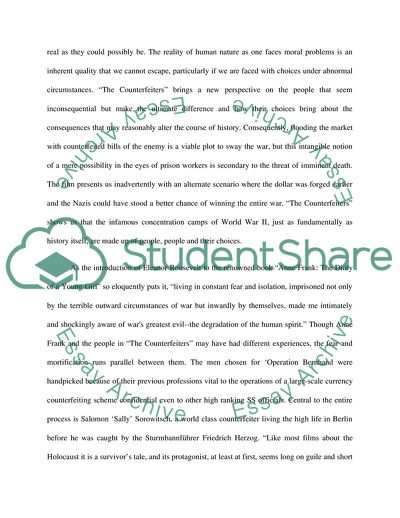Cite this document
(The Counterfeiters - A History Portrayal Movie Review - 1, n.d.)
The Counterfeiters - A History Portrayal Movie Review - 1. https://studentshare.org/visual-arts-film-studies/1801981-consider-the-means-by-which-history-is-portrayed-in-the-german-film-the-counterfeiters2007-how-does-the-film-contribute-to-the-framing-of-history
The Counterfeiters - A History Portrayal Movie Review - 1. https://studentshare.org/visual-arts-film-studies/1801981-consider-the-means-by-which-history-is-portrayed-in-the-german-film-the-counterfeiters2007-how-does-the-film-contribute-to-the-framing-of-history
(The Counterfeiters - A History Portrayal Movie Review - 1)
The Counterfeiters - A History Portrayal Movie Review - 1. https://studentshare.org/visual-arts-film-studies/1801981-consider-the-means-by-which-history-is-portrayed-in-the-german-film-the-counterfeiters2007-how-does-the-film-contribute-to-the-framing-of-history.
The Counterfeiters - A History Portrayal Movie Review - 1. https://studentshare.org/visual-arts-film-studies/1801981-consider-the-means-by-which-history-is-portrayed-in-the-german-film-the-counterfeiters2007-how-does-the-film-contribute-to-the-framing-of-history.
“The Counterfeiters - A History Portrayal Movie Review - 1”. https://studentshare.org/visual-arts-film-studies/1801981-consider-the-means-by-which-history-is-portrayed-in-the-german-film-the-counterfeiters2007-how-does-the-film-contribute-to-the-framing-of-history.


